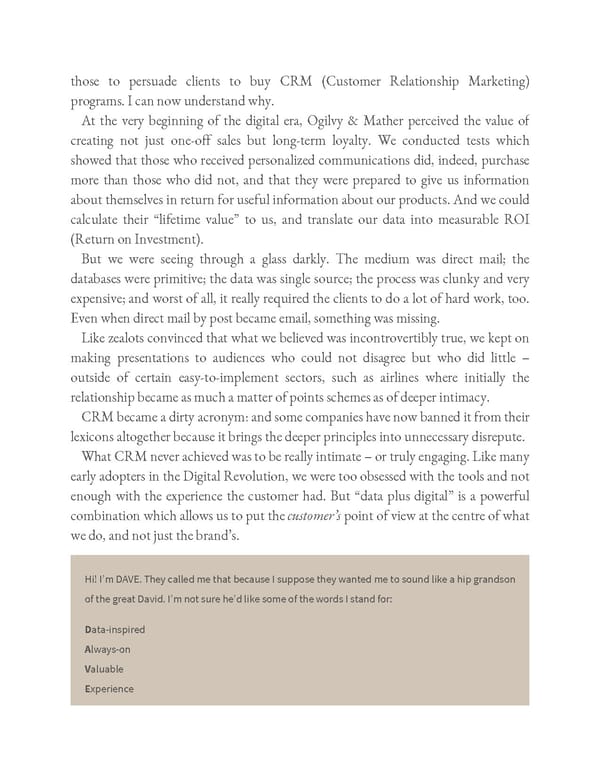those to persuade clients to buy CRM (Customer Relationship Marketing) programs. I can now understand why. At the very beginning of the digital era, Ogilvy & Mather perceived the value of creating not just one-off sales but long-term loyalty. We conducted tests which showed that those who received personalized communications did, indeed, purchase more than those who did not, and that they were prepared to give us information about themselves in return for useful information about our products. And we could calculate their “lifetime value” to us, and translate our data into measurable ROI (Return on Investment). But we were seeing through a glass darkly. The medium was direct mail; the databases were primitive; the data was single source; the process was clunky and very expensive; and worst of all, it really required the clients to do a lot of hard work, too. Even when direct mail by post became email, something was missing. Like zealots convinced that what we believed was incontrovertibly true, we kept on making presentations to audiences who could not disagree but who did little – outside of certain easy-to-implement sectors, such as airlines where initially the relationship became as much a matter of points schemes as of deeper intimacy. CRM became a dirty acronym: and some companies have now banned it from their lexicons altogether because it brings the deeper principles into unnecessary disrepute. What CRM never achieved was to be really intimate – or truly engaging. Like many early adopters in the Digital Revolution, we were too obsessed with the tools and not enough with the experience the customer had. But “data plus digital” is a powerful combination which allows us to put the customer’s point of view at the centre of what we do, and not just the brand’s. Hi! I’m DAVE. They called me that because I suppose they wanted me to sound like a hip grandson of the great David. I’m not sure he’d like some of the words I stand for: Data-inspired Always-on Valuable Experience
 Ogilvy on Advertising in the Digital Age Page 254 Page 256
Ogilvy on Advertising in the Digital Age Page 254 Page 256